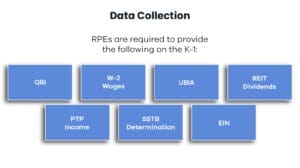The Qualified Business Income (QBI) Deduction allows individuals and certain estates or trusts (Taxpayers) to take a 20% deduction of Qualified Business Income. This reduces the maximum Federal income tax rate from 37% to 29.6% on QBI.
The Tax Cuts and Jobs Act significantly reduced the highest corporate income tax rate down from 34% to 21%.

In an effort to equalize the playing field for income, Congress also enacted the Qualified Business Income Deduction, otherwise known as the 20% Deduction, which allows for a 20% deduction on Qualified Business Income, which would be taxed at the highest rate of an individual of 37%, and could be reduced with this 20% deduction down to 29.6%.

The QBI Deduction is eligible on any qualifying trade or business conducted in the U.S. or Puerto Rico, plus any qualified REIT dividends or income from publicly traded partnerships.

One point to keep in mind is that this QBI Deduction cannot exceed 20% of the taxpayer’s income less the standardized itemized deduction or net capital gains which also includes qualified dividends.

When collecting the information, whether as the owner getting a K1 from the partnership or S-corporation, or as the owner providing K1s to your investors, is required to provide the following information on the K1s.
One point to illustrate is the SSTB Determination will impact whether or not the trade or business is eligible for the QBI Deduction. If the trade or business falls under the definition of a specialized service, trade or business, that deduction would not apply to taxpayers above the taxable income threshold. It’s important that the QBI deduction is analyzed on a trade or business level, so that throws in complications for tiered partnerships, where the activity needs to be tracked by the underlying trade or business.

While the QBI Deduction can be reduced or limited by the wages or basis limitations, one way to maximize the QBI Deduction is to aggregate multiple trades or businesses that can qualify as one single trade or business to maximize on the wages base or limitation from one business and combine it with a second business that has excess wages or basis. Taxpayers may need additional information in order to analyze whether these trades or businesses are eligible for aggregation. They might need the ownership structure to determine whether the trades or businesses have common ownership of 50% or more, they would need to know the specific business activity to make sure the trades or businesses can be aggregated, and they need to ensure and confirm that the trades or businesses share central management function.
If you haven’t thought about this yet, it’s not too late, as the IRS allows taxpayers to amend their 2018 returns for the sole purpose of aggregation, only in 2018. This is a one-time opportunity that would be allowed for 2018 tax years.
One other point to mention is that aggregation decisions cannot be changed in subsequent years unless facts or circumstances dictate or warrant that change.

To summarize, we can help determine whether or not you have a trade or business, whether or not the trade or business is a specialized service trade or business (SSTB), we can help you determine the best entity selection for your trade or business, we can help determine the W-2 wage computation in order to maximize that limitation, and similarly we can go through your computation of your unadjusted basis immediately after acquisition. It’s important to know that based on current law, the QBI Deduction will be applicable through the 2025 calendar year. Starting January 1, 2026, the QBI Deduction will not apply.





 Previous
Previous






